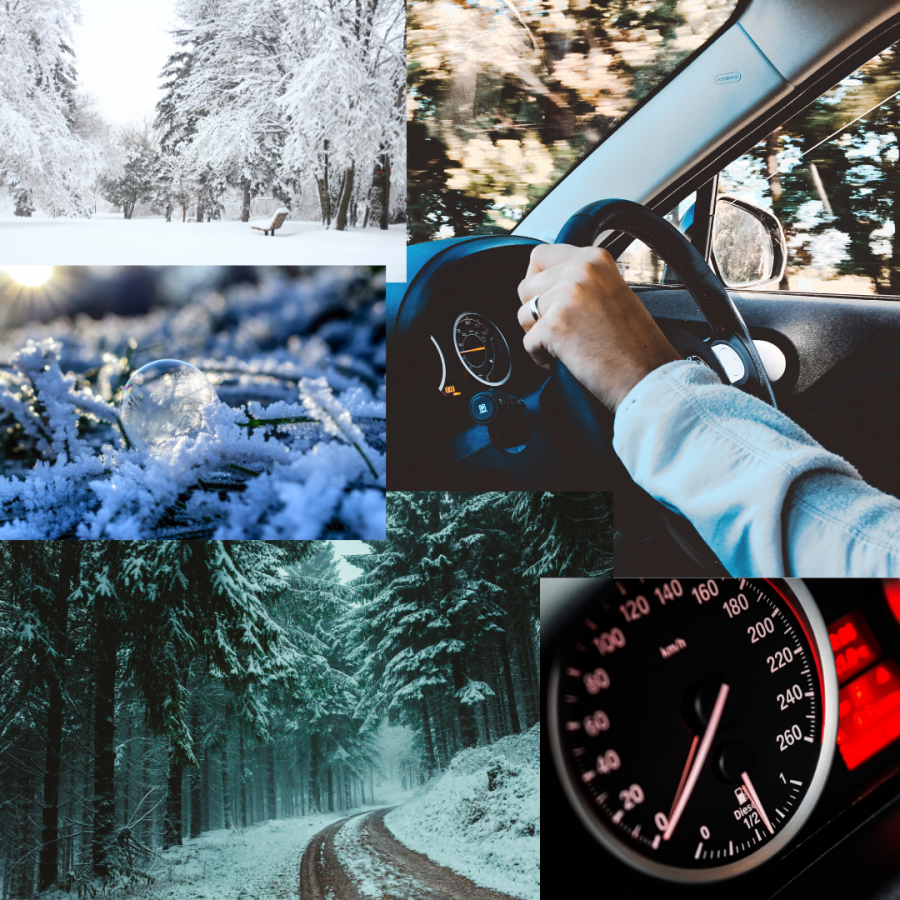Driving In Winter Weather
Be extra cautious when driving in unpredictable wintry weather.
Driving in Winter Weather
One classic milestone every American high schooler reaches is the ability to drive. Although the act is not overly spectacular, it’s statement of independence says otherwise. Yet, even excited permit and newly licensed drivers should take proper precautions, despite the probable lead-foot they may possess, as auto accidents are the main cause of death of 15 to 20-year-olds.
As the days become shorter and air becomes colder, the possibilities of snow and ice rise. As any experienced driver would know, driving in bad conditions is unfavorable and calls for being extra alert and careful. Some tips for driving in dangerous winter weather include: make sure your tires are properly inflated and have traction, keep plenty of gas in your car, never turn on and warm up your car in an enclosed area such as a garage, (the gases are dangerous). Do not use cruise control when passing over a slippery surface, keep extra clothes and backup items in your car in case you become stranded. While some of these tips might seem like common sense, they could be the difference between life and death.
Some other tips are: drive slowly, (it’s better safe than sorry), speed up and slow down gradually, increase your following distance behind a car, know your brakes and keep your foot on them constantly, don’t stop if you can avoid it, (this doesn’t mean to blow through Stop Signs, just always try to keep your car moving slightly so it doesn’t totally stop), don’t power up hills, but don’t stop on them either. If you would like more road-safety tips, click this link about winter driving tips for more!
Alayna Sparr, a sophomore who has been able to drive by herself since September, said her piece about driving in winter weather. “I have driven through winter weather before, although these past few snow days was my very first time. It makes me very nervous, so the first time that I had to drive in icy conditions my dad followed me home. I didn’t want to just not drive because I knew I was going to have to deal with it at some point.” She continued, “I just drive very slow and pay attention to where the icy patches on the roads are. I’ve been given tips to never step on your brake when you are on the ice, to do it right before you approach the patch.”
When giving advice to fellow teen drivers, Sparr said: “I would first advise them to stay off the roads as much as possible, but when you do have to drive on them, drive slow even when it doesn’t look icy. And of course don’t text and drive!”
Corinne Myers, a senior who has been driving since the end of her sophomore year, said this about winter driving: “I have driven through winter weather!” When asked about how driving in poor weather makes her feel, she said: “Well, it’s not that I’m nervous about my driving skills, it’s that I’m nervous that others are going to be driving stupid in this weather, which can still cause an accident. Usually I try to listen to calming music while I drive and just try to stay completely alert of my surroundings.” Then she said: “ My advice would be to not do anything suddenly. Always apply your brakes earlier than you think you need to and always accelerate slowly!”
All in all, as winter weather begins to roll into Farmington, make sure and be prepared for anything! After all, drivers under the age of 20 make up the largest percent of distracted drivers, so don’t get caught up in that ratio! If you would like more statistics, check out this link all about teen drivers for more! Stay warm, safe, and slow!

Interests: Cross Country, Track, Student Council, FBLA, Journalism
Quote: “We are what we repeatedly do. Excellence, then, is not an act, but a...




